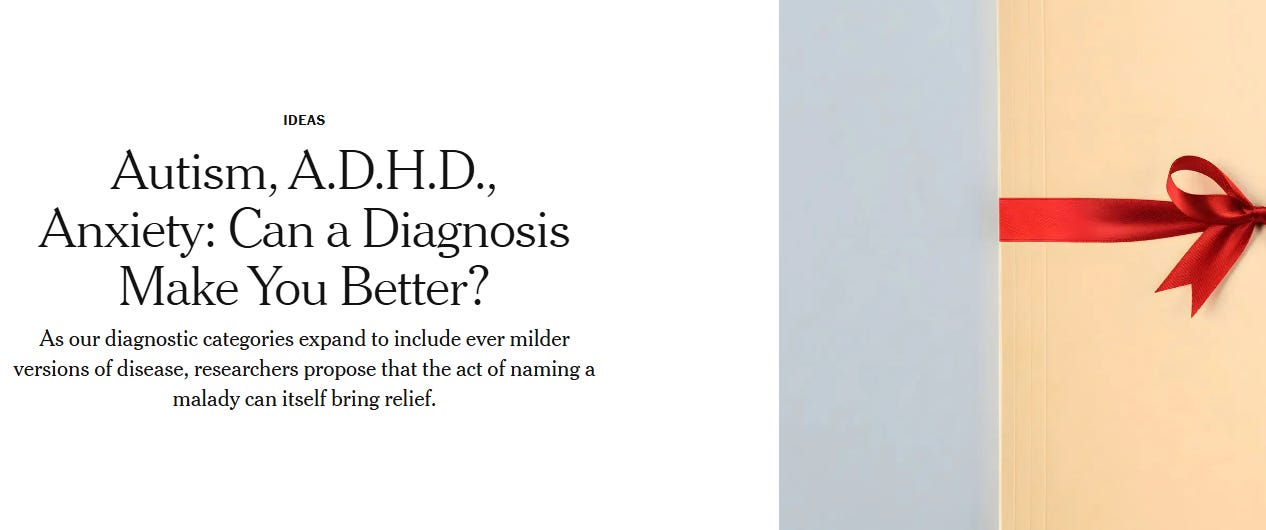New York Times Spotlights the Rumpelstiltskin Effect
Readers will remember my recent article in BJPsych Bulletin on the Rumpelstiltskin effect, our term for the relief experienced on receiving a clinical diagnosis, as well as a summary blog post on this newsletter. I am grateful to share that Ellen Barry has covered our paper for the New York Times in a layered and multifaceted story that explores both the advantages and disadvantages of psychiatric diagnosis and our cultural appetite for it. Check it out, here’s a gift link for the NYT article.
There are understandable reasons for both positive and negative effects of diagnosis, such as getting access to an etiological explanation or treatment or now facing a stigmatized label or a condition with a concerning prognosis. However, diagnosis seems to bring a sense of psychological relief in ways that go beyond etiological explanation or treatment, which makes it somewhat puzzling and interesting, and it is this aspect of diagnosis that we are trying to capture by the Rumpelstiltskin effect.
This is how the New York Times article ends:
“As for Dr. Aftab… he has gone back to his patients — adults and adolescents trying to manage daily life in the face of dread and grief and panic and despair. His exploration of the Rumpelstiltskin effect has not made him more liberal in diagnosing them, or more sparing.
If anything’s changed, it’s that he spends more time speaking with patients before he gives them the news. Often, what he tells them is not to take the exact label too seriously; he has seen what can go wrong when people build their identity around a diagnosis. Psychiatric problems are fuzzy and fluid, he tells them. They exist in a mesh of temperament and life story — “one thread,” he said, “in a much larger story of who you are.”
As for his fellow clinicians, he wants them to stop seeing diagnosis as a neutral, procedural step, and to understand the power that their words command — some social benefit, some stigma, some fatalism, some identity — and that they will continue to resonate in the patient’s life, like a bell that will not stop ringing.”
As a clinician, I want to give my patients the tools they need to address their problems, which includes the vocabulary to talk about it. At the same time, I want to avoid a situation where patients are understanding the diagnostic label in a concrete manner as a discrete disease entity or as their personal identity. It becomes a delicate balancing act. Clinical concepts are appealing because they offer a useful hermeneutic lens through which to look at our problems. However, they can be over-applied and over-extended, and they are not universally helpful. The key to mitigating many of the risks of diagnosis lies in being mindful that a diagnosis is just one piece of a much more detailed puzzle of personhood, a useful but fallible tool, something we are prepared to put aside once it has outlived its usefulness. If clinical diagnosis is understood as one way, among many, of conceptualizing a problem, this encourages clinicians and society at large to remain flexible, responsive, and open to multiple understandings of human suffering.
See also:
What a psychiatric diagnosis means – and what it doesn’t mean. Psyche.
People Are Stumbling From One Misguided Narrative About the Medical Model to Another
Journalism, Psychiatry, and Public Trust: Q&A with Ellen Barry



